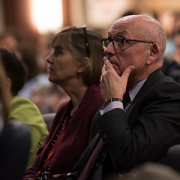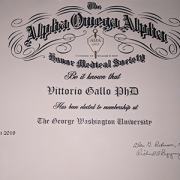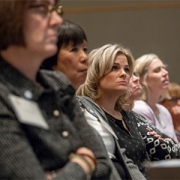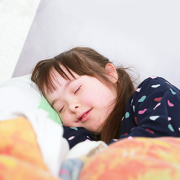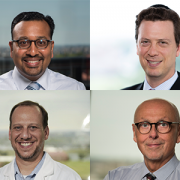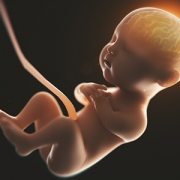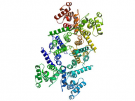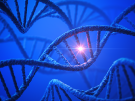Neurodevelopmental disorders: Developing medical treatments
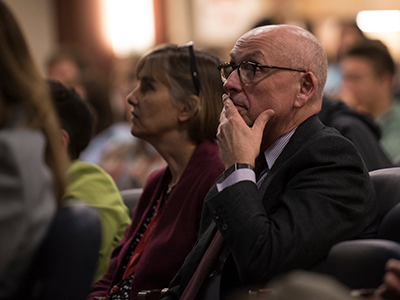
Vittorio Gallo, Ph.D., Chief Research Officer, participates in the world’s largest general scientific gathering, leading panelists in a timely conversation about progress made so far with neurodevelopmental disorders and challenges that lie ahead.
The human brain is the body’s operating system. Imagine if rogue code worked its way into its hardware and software, delaying some processes, disrupting others, wreaking general havoc.
Neurodevelopmental disorders are like that errant code. They can occur early in life and impact brain development for the rest of the person’s life. Not only can fundamental brain development go awry, processes that refine the brain also can become abnormal, creating a double neural hit. Adding to those complications, children with neurodevelopmental disorders like autism spectrum disorder (ASD) and Fragile X syndrome often contend with multiple, overlapping cognitive impairments and learning disabilities.
The multiple layers of complexities for these disorders can make developing effective medical treatments particularly challenging, says Vittorio Gallo, Ph.D., Chief Research Officer at Children’s National Health System and recipient of a coveted Senator Jacob Javits Award in the Neurosciences.
During the Feb. 16, 2019, “Neurodevelopmental Disorders: Developing Medical Treatments” symposium, Gallo will guide esteemed panelists in a timely conversation about progress made so far and challenges that lie ahead during the AAAS Annual Meeting in Washington, the world’s largest general scientific gathering.
“This is a very important symposium; we’re going to put all of the open questions on the table,” says Gallo. “We’re going to present a snapshot of where the field is right now: We’ve made incredible advances in developmental neuroscience, neonatology, neurology, diagnostic imaging and other related fields. The essential building blocks are in place. Where are we now in developing therapeutics for these complex disorders?”
For select disorders, many genes have been identified, and each new gene has the potential to become a target for improved therapies. However, for other neurodevelopmental disorders, like ASD, an array of new genes continue to be discovered, leaving an unfinished picture of which genetic networks are of most importance.
Gallo says the assembled experts also plan to explore major research questions that remain unanswered as well as how to learn from past experiences to make future studies more powerful and insightful.
“One topic up for discussion will be new preclinical models that have the potential to help in identifying specific mechanisms that cause these disorders. A combination of genetic, biological, psychosocial and environmental risk factors are being combined in these preclinical models,” Gallo says.
“Our studies of the future need to move beyond describing and observing in order to transform into studies that establish causality between the aberrant developmental processes and these constellations of neurodevelopmental disorders.”


